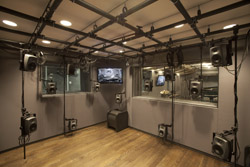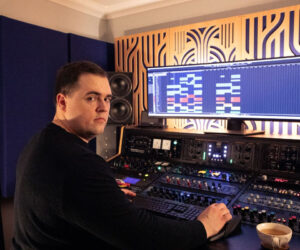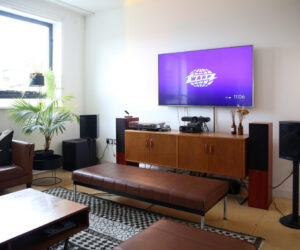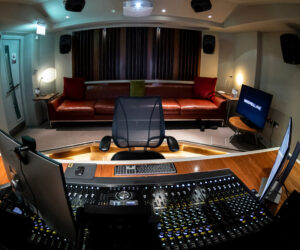Genelec was recently chosen to provide monitoring solutions for the Research Lab in the new Recording/Teaching facility at New York University’s Department of Music and Performing Arts Professions.
The complex is one of the most technically advanced audio teaching facilities of its type in the world.
Genelec Active Monitors and Subwoofers will help NYU provide their students with state-of-the-art listening and evaluation tools, as a new generation of audio researchers and academics probes more deeply into the workings of sound.
Created to provide students with a sophisticated learning environment, the $6.5-million, 7,500-square-foot complex is devoted to contemporary Music Technology: Theory, Cognition, Informatics, Computer Music, Recording, Production and Immersive Audio.
One of the key components of the Recording/Teaching facility is its unique Research Lab, dedicated to 3-D Audio experimentation.
The Lab is equipped with an innovative, infinitely configurable grid, upon which are mounted 16 Genelec 8030A Bi-Amplified Active Monitors; also, a pair of moveable Genelec 7050A Active Subwoofers resides on the lab’s floor.
The Research Lab, designed like the rest of the recording facility by John Storyk of the Walters-Storyk Design Group, is a very unique space. Its extremely low reverberation time imparts near-anechoic properties. The room is further connected to the rest of the facility via tie lines.
Its key feature is a ceiling-mounted pipe grid that offers the 16 Genelec 8030A monitors endless possibilities for configuration.
“For psycho-acoustical experiments, we can configure eight speakers mounted high and eight mounted low, or four speakers high, four low and eight at ear level, for instance,” explains Tom Beyer, Chief Systems Engineer at the facility.
“All this flexibility in positioning the speakers brings a greater degree of detail to experiments such as determining the ear’s ability to localize sound, or how certain frequencies are better localized than others.”
Dr. Agnieszka Roginska, Associate Director of Music Technology for the Department of Music and Performing Arts Professions, says the Lab will greatly facilitate the measurement of impulse responses and other testing.
“The system is not static, so we can orient the speakers spherically, which gives us tremendous flexibility,” says Roginska, who adds that the wide and extremely even frequency response of the Genelec 8030A speakers allows testing over the widest frequency range available for its size.
Other applications for the Research Lab include ongoing testing of the radiation patterns of musical instruments, which will provide greater insights into how best to choose and position microphones for recording them.
“Everyone who comes in contact with the Research Lab will gain knowledge from it,” says Beyer, who cites the Genelec 8030A’s small form factor for providing a high-performance speaker in a very compact package.
“As a result, we are able to suspend every speaker from the ceiling at any height, at any angle, and rotate them 360 degrees on any axis. Genelec monitors have been very reliable for us in a variety of applications for us in the past, and this new one is no different. They’re great monitors.”




















